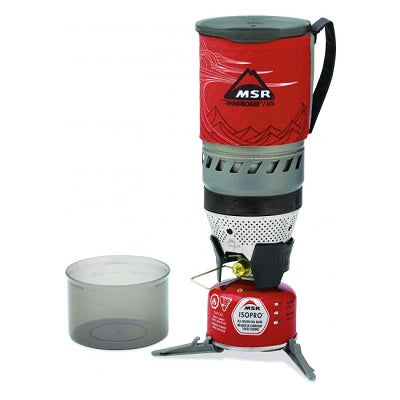
MSR WindBoiler Stove Review
--Product Information--
Product Name: WindBoiler
Product Brand: MSR
Best Use: Heating up water in adverse conditions
Sizes / Specs: 1 liter / 34 oz; 432g 15.25
Location of Test: Descutes National Forest, the back stoop
Duration: 1 month
--Ratings--
Value Rating: 9
Durability Rating: 8
Overall Rating: 10
When I first heard that MSR would be making the WindBoiler, I was really excited to to see the new technology. MSR had already produced the Reactor, which used similar technology but was overkill for my shorter, 1-2 person trips. I’d also owned a Jetboil for years and wanted something that would perform more effectively in poor conditions. The WindBoiler takes the best technology out there and delivers it to the individual recreators in a usable manner.
Mountain Safety Research (MSR) is a Seattle based brand that has produced some of the most innovative and relevant outdoor products made in the last 45 years. The people with this company spent two and a half years in all kinds of places and conditions testing and improving the WindBoiler, even strapping it to the hood of a car and driving around to test its responsiveness to wind. The wind guage on the hood measured 25mph of direct exposure.
The WindBoiler is unlike any other stove on the market. Other companies have made pots that connect to stoves, but only MSR took the time to make a truly integrated stove system to perform on the most demanding adventures. The WindBoiler isn’t designed for convenient packaging; it is designed to heat the most food and water under the harshest conditions using the least fuel.
The essence of the WindBoiler system isn’t it’s packability, it’s the stove. While most backcountry stoves are little more than a valve and a place to set your pot, the WindBoiler uses advanced technology to regulate and disperse fuel while managing an incredibly efficient combustion process.
That effective combustion process is what allows this system to boil water fast, even in cold conditions. I used it camping in the deschutes national forest this month and was certainly glad it heated water as fast as it did. Wrapping my hands around its insulated pot and after breaking down frosty tent poles was a highlight from that trip.
The first key component of the WindBoiler’s stove is the pressure regulator which controls the amount of fuel that feeds the combustion process. This helps give peak performance in high altitude or cold conditions. It also manages to squeeze every last drop of fuel out of the canisters without a prolonged reduction of power. Whenever I finish off a canister of fuel, the WindBoiler promptly runs out instead of slowly dropping in performance.
The most important thing the WindBoiler stove does differently is the way it mixes oxygen with the fuel. Most stoves run on about 50% primary air, meaning that 50% of the oxygen needed to feed the flame in mixed at the point of combustion. The other half of the oxygen needed to consume the available fuel mixes above the first point of combustion. The WindBoiler, on the other hand, uses 100% primary air, mixing the oxygen early in the combustion process. The pot also uses effective ventilation system that draws CO2 up and away from the stove, creating a kind of jet-stream pushing heat in
The last parts of the stove worth mentioning are the lid and bowl. The heat resistant clear plastic used to construct both of these performs great. The lid lets you see what’s going on inside your pot, is easy to sip from, and still does a great job keeping heat and boiling water from escaping. The bowl is sized well and is pretty tough; at least tough enough to survive being crushed between a car seat and my backside.
This whole package weighs in at just under one pound. Heavier than the simpler backpacking stoves, but keep this in mind: fuel efficiency equals weight over time. On a one-night trip I might carry a Pocket Rocket or similar stove, but for longer or more demanding excursions, the fuel efficiency allows for a few canisters to be left at home, offsetting much of the weight difference.
The only problem I had with this stove was with its least important component, the canister stand. When I pulled it out of the packaging I tried to fold a leg out horizontally instead of rotating it vertically and immediately snapped the joint. Had I read the users manual I could have avoided the damaged pot stand, but was still unimpressed by how easily it broke.
Weather you’re certain you’ll need peak performance huddled around your stove on wind swept glacier at 14,000 ft or you’re just just looking to cook quickly and efficiently, the WindBoiler gets the job done.
Pros: More efficient and effective than any comparable stove.
Cons: The canister stand is wonky and the pot rest isn’t available yet. Both issues are being addressed as we speak.
Bottom Line: I’m never giving it back to the guy I borrowed it from. Sorry Ryan.


